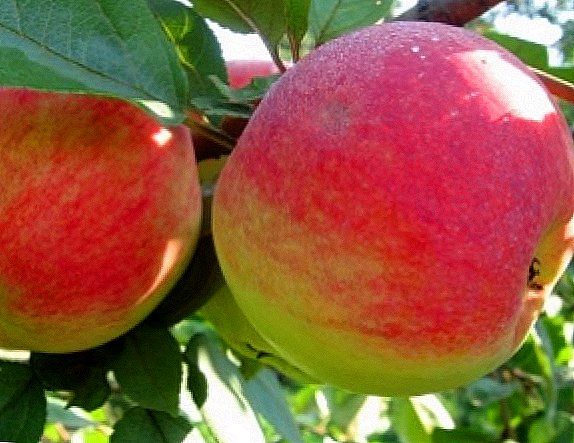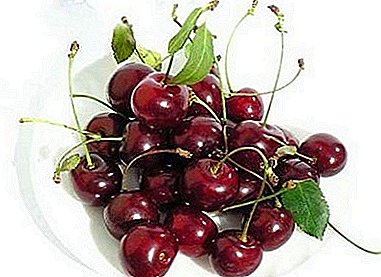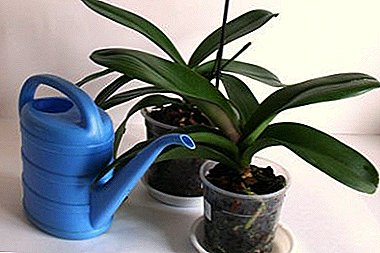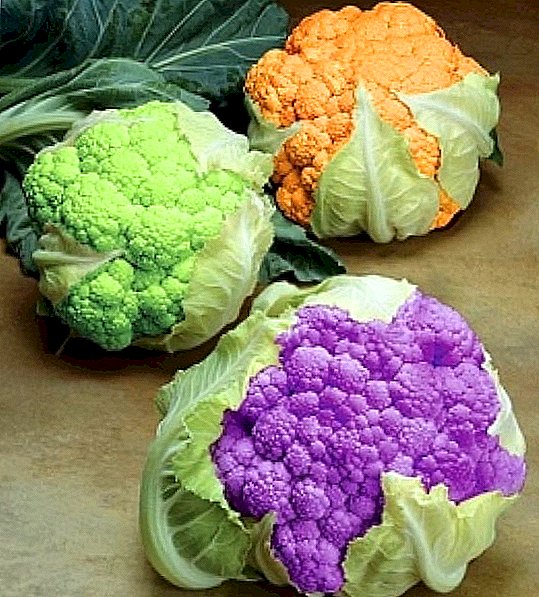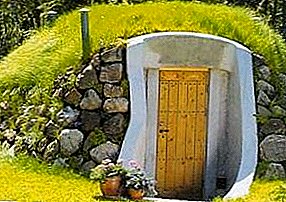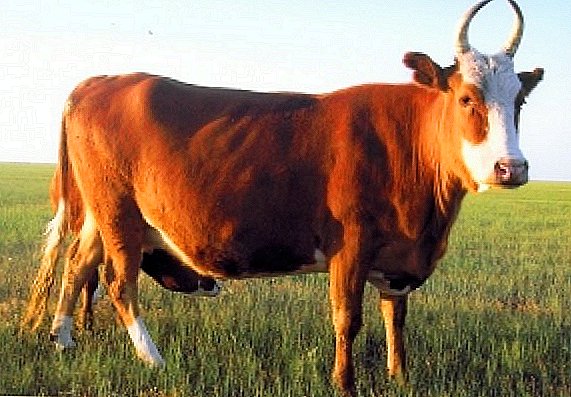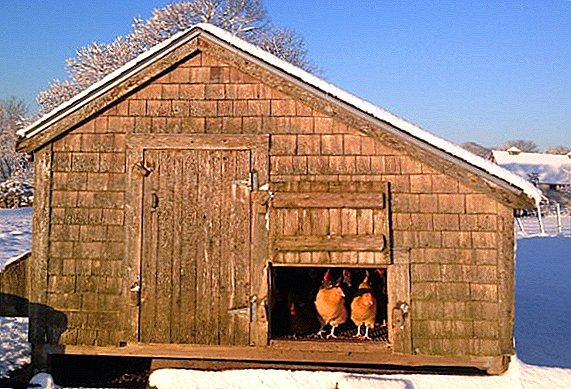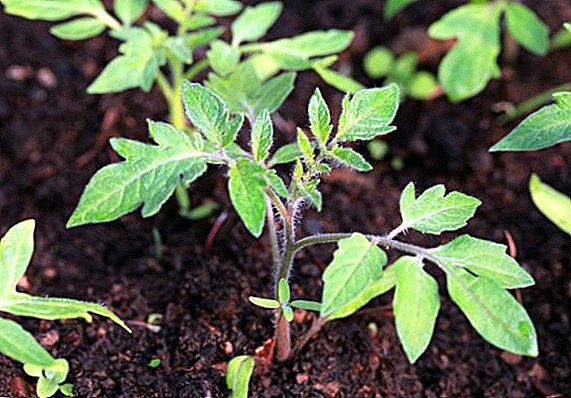 The purpose of sowing a tomato is, of course, their fruit, which gardeners pay attention to the most. However, it should be understood that for a good harvest, first of all, it is worth growing excellent seedlings, which requires frequent and proper fertilizers. Additional replenishment of this plant is needed almost always, therefore, below we consider what kind of fertilizer you need to feed tomatoes.
The purpose of sowing a tomato is, of course, their fruit, which gardeners pay attention to the most. However, it should be understood that for a good harvest, first of all, it is worth growing excellent seedlings, which requires frequent and proper fertilizers. Additional replenishment of this plant is needed almost always, therefore, below we consider what kind of fertilizer you need to feed tomatoes.
Signs of malnutrition: when do you need to feed seedlings?
The most pressing issue at the agroforums is “How can you feed tomato seedlings so that they have plump stems?”, Since thin seedlings are very rarely able to give a good harvest and are the first sign that plants need additional nourishment. 
Usually, seedlings are sown in a special soil, which is saturated with all the necessary components for plant growth, therefore, it comes to top dressing only after transplanting to open ground.
Important! It is necessary to cook beds for tomatoes in the autumn, when gardeners often saturate the land with manure or humus (who has what). If we are talking about clay soil or loams, then in the fall it is worth making a little peat and sawdust into it, which had time to perepret. If the soil is characterized by high acidity, it will not interfere with a little lime or dolomite flour. Note that in the spring you can make only rotted manure into the ground.
After transplanting, the seedlings do not always grow well, but her condition will tell you what the tomatoes need:
- when lush tomato seedlings dramatically slow their growth after a transplant, and its rich green leaves turn palethe earth usually suffers from nitrogen deficiency;
- when plants are rapidly growing and there is an excess of greenery on them, it is necessary to take measures to reduce the nitrogen content in the soil (such as “fattening” the greenery in the future may lead to the fruit not tied to the bushes);
- bush leaves of tomatoes that have acquired purple shadeafter transplantation are usually evidence lack of phosphorus in the soil, and if there is too much phosphorus, the leaves and ovary will turn yellow and fall off;
- if a tomato seedling, after transplantation, began to fade, it means it lacks nitrogen, although if there is too much of this substance in the soil, the leaves of the plant will be covered with unsightly dull spots;
- when leaves curl into the ground follows add nitrogen and potassium, but the amount of phosphate, on the contrary, should be tried to neutralize.

Important! To ensure the simultaneous ripening of tomato fruits, seedlings must be fed with phosphorus and potassium. The quality of such fruits will also be noticeably better.Be sure to make fertilizer costs and in those cases when you are planting your tomato seedlings in the sandy ground. Of course, you can do without this procedure, but only if your garden is rich in black soil.
When using feedings, try not to overdo it with the dose, as the plants are better to “underfeed” (the excess mineral components act on tomatoes no less perniciously than their deficiency).
Scheme feeding seedlings
Regardless of what type of fertilizer you will use to feed your tomatoes, it is important to follow the dosage and fertilizer pattern per breast. The general scheme of fertilizing seedlings of tomatoes is as follows:
- Approximately on the 15th day after sowing the seedlings, in cups or boxes, with plants beginning to germinate, it is necessary to fertilize the ground: in 1 liter of water, dilute with a teaspoon of nitrophoska and complex fertilizer intended for tomato dressing. The resulting composition is poured every bush.
- On the 25th day after sowing the seedlings, add a solution of nitrophoska and potassium permanganate to the ground (the solution should be weaker, therefore pour 1 liter of water less than 1 teaspoonful of each substance). In 1 liter of the solution is not superfluous to add 0.5 teaspoons of complex fertilizer. Repeating this dressing of tomato seedlings is worth every 10 days.
- After 15 days, from the moment of picking of young tomatoes, add potassium sulphate and superphosphate to the soil (enter 10 tablespoons of each substance for 10 liters of water). Gardeners recommend adding to this fertilizer also 2 tablespoons of Kemira.
- After 7-10 days from the date of transplanting, it is poured with a weak solution of potassium permanganate.
- After 25 days from the date of planting, the seedlings are poured with a solution of saltpeter, which is pre-diluted in water (only 10-20 grams of the substance is needed for 10 liters).
- Foliar nutrition is also very important, because thanks to them the fruits of tomatoes will ripen as quickly as possible. You can feed the plants once a week or once every six days. To do this, 10 liters of water must be diluted in 10 liters of urea, 10 grams of superphosphate and 10-15 grams of potassium sulfate.
- When the first flowers appear on tomato bushes, they should be added with a solution of mullein and azofoska (25 grams of each substance per 10 liters of water).
- From the moment of flowering the bushes will need two or three additional feeding, which is recommended to be carried out with an interval of two weeks. For 10 liters of water you need to use about 15 grams of mullein (gardeners often replace it with bird droppings) and 20 grams of potassium sulfate. If there is no mullein, you can take saltpeter, but only then the ratio of substances in the solution will be 25 grams of saltpeter and 30 grams of potassium sulfate.


Important! If the tomatoes are planted on poor soil, and the summer was very rainy, the number of dressings must be doubled. At the same time, it is important to reduce the doses of all these fertilizers by 1/3 so that the tomatoes "do not burn out".
Types of Tomato Fertilizers
If you do not know how to reinforce tomatoes for growth, we can tell you about a number of different fertilizers that are used for this purpose. These options are perfect for both villagers who can use a lot of organic matter, as well as for urban people who find it easier to turn to mineral nutrition for plants.
Did you know? During the picking, saltpeter and superphosphate can be added to the wells in which the seedlings will be planted. However, you cannot use more than 1 tablespoon of fertilizer per 1 well.
Feeding with mullein
Korovyak, most often, is used for fertilizing tomato bushes. When fresh, it is recommended to be used only when preparing the beds in the fall.
 If we are talking about feeding seedlings, then Mullein is collected in a bucket, filled with water and left for several days under the open sun. After fermentation of this mixture, it is very diluted with water and watering the beds. Such a fertilizer will be useful throughout the garden.
If we are talking about feeding seedlings, then Mullein is collected in a bucket, filled with water and left for several days under the open sun. After fermentation of this mixture, it is very diluted with water and watering the beds. Such a fertilizer will be useful throughout the garden.
Important! Tomatoes are very afraid of large doses of mullein, which can dry their bushes.
Use ash
When planting seedlings in the wells, you can also add about 2 tablespoons of ash, which will provide the bush with all the necessary elements. It can be taken directly from the stove, or you can cut the cut branches and fallen leaves right on the future garden bed with tomatoes.
Ash is good for tomatoes because it contains a lot of potassium, as well as enough phosphorus and calcium. True, even here it is very important not to overdo it - it is better to deposit its soil in the autumn; moreover, a pound of substance should not be used per 1 square meter. More serious doses of ash are recommended only for clay and acidic soils.
How to feed tomato seedlings with yeast?
 Not everyone knows that yeast can give a very good effect in agriculture, especially when it comes to tomatoes. How to feed tomato seedlings with yeast? For this you need to use a very simple solution - 10 liters of water, add just 10 grams of live yeast.
Not everyone knows that yeast can give a very good effect in agriculture, especially when it comes to tomatoes. How to feed tomato seedlings with yeast? For this you need to use a very simple solution - 10 liters of water, add just 10 grams of live yeast.
To activate the fermentation process, the water should be taken warm, and it is also useful to dilute some sugar in it. This solution and pour tomato bushes.
Top dressing with iodine solution
Thanks to iodine, the fruits of tomatoes grow very large, and the time of their ripening may occur much earlier. For watering tomato bushes, once a week make a solution of 10 liters of water, in which only 4-5 drops of iodine will be enough.
Manure fertilizer
Fresh manure for tomatoes, as well as mullein, is not recommended for use in the spring, especially if it is not liquid, but mixed with straw. If it is brought into the ground in the fall, then by spring it will all rot and form a natural compost in the soil. Tomatoes are best horse manure or chicken manure.
The use of urea for feeding tomatoes
Urea is very good source of nitrogen. But how to feed urea tomatoes, which are still at the seedling stage?
 Top dressing is important to carry out after transplanting tomato seedlings to the beds, watering them with a solution of urea in such a way that no more than 20 grams of this mineral substance per 1 square meter. Many gardeners recommend using urea only for foliar treatment.
Top dressing is important to carry out after transplanting tomato seedlings to the beds, watering them with a solution of urea in such a way that no more than 20 grams of this mineral substance per 1 square meter. Many gardeners recommend using urea only for foliar treatment.
The use of preparations for feeding tomatoes
Among the known preparations for tomatoes, it is best to use superphosphate, since this preparation is capable of enriching the soil immediately with nitrogen, calcium, magnesium, sulfur and even phosphorus. A solution of superphosphate bushes can even be sprayed. To complex fertilizers that are recommended to use in beds with tomatoes, also applies nitroammofosk.
How to perform foliar feeding?
Foliar treatment involves spraying the bushes with a solution of water and fertilizer. Often, such a procedure is not mandatory, however, if the tomatoes are planted on too acidic soil, the appearance of their bushes signals a lack of calcium and phosphorus, or flowers will soon appear on the bushes, without foliar top dressing.
How to feed a seedling tomato foliar method? The best thing for this purpose is boron, which provides the following positive characteristics of shrubs and their fruits:
- when processing flowering branches, it stimulates the formation of their ovaries and the development of fruits;
- boron-treated tomatoes become sweeter;
- Such foliar dressing prevents damage to the bushes and tomatoes by parasites and diseases.

Splash tomato bushes must be a solution prepared in the following proportions: for 1 liter of hot water (not boiling water), you need to add only 1 gram of boric acid. It is necessary to spray not only the leaves and ovaries, but also the fruits, if they have already formed. Each bush will require about 10 ml of this fertilizer.
How can you feed the tomatoes during flowering?
We have already figured out the question “How to feed small seedlings of tomatoes?” However, this plant also requires additional support during the flowering period, especially when it comes to greenhouse cultivation. Directly during this period, the bushes and their flowers are recommended to be fed with special complex preparations - nitroammophoska, kemira and diammophos.
 Most flowering tomatoes need boron and phosphorus, the first of which is better to contribute foliar way. Organics will also be useful, the main thing is to make it normalized and with the frequency prescribed above.
Most flowering tomatoes need boron and phosphorus, the first of which is better to contribute foliar way. Organics will also be useful, the main thing is to make it normalized and with the frequency prescribed above.
Did you know? Tomatoes do not like when they are watered too often, so if summer is rainy enough, then you can not worry much about moisture. Also, to get a good harvest, tomato bushes should be planted at a distance of 45 cm from each other and always in the sunlit garden.
If we are talking about greenhouse inhabitants, then it is recommended to use only mineral fertilizers for them, since in such conditions organic matter can produce completely different results than outdoors.
If you follow all the recommendations regarding the fertilizer of tomato bushes, starting from the very planting, you can very quickly enjoy the tasty and sweet fruits. At the same time, the harvest will be very rich, and the soil will be able to remain fertile for planting other crops.


